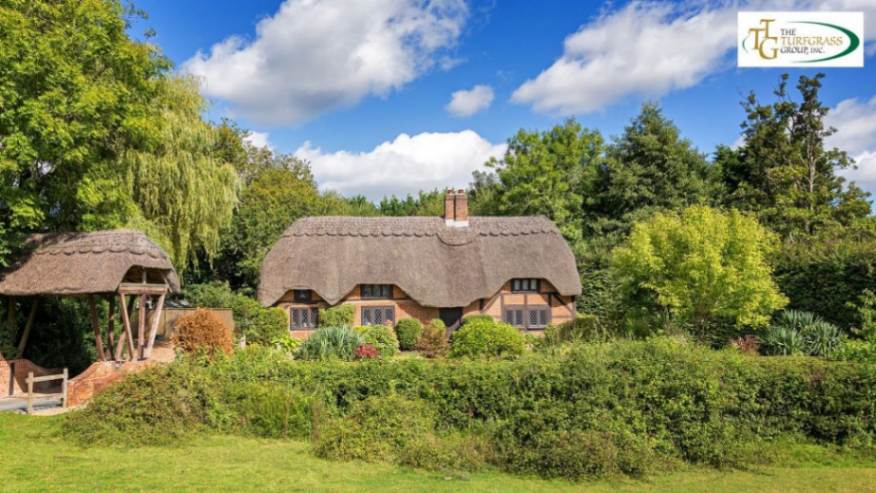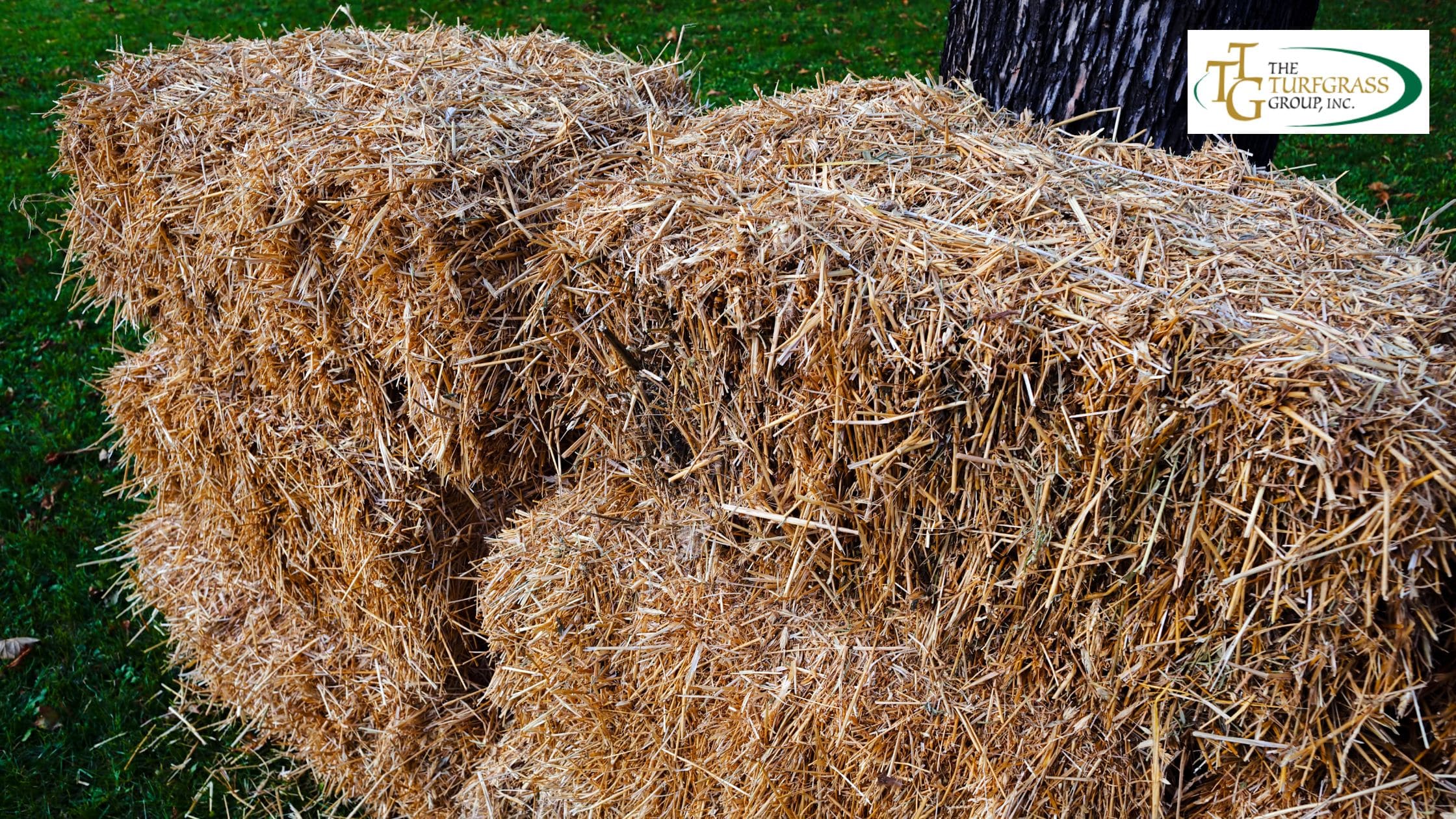
Thatch is a term often encountered in lawn care, yet many homeowners and gardeners may need help understanding its implications for grass health.
This article delves into the concept of thatch, how it forms, its effects on Zoysiagrass, and practical strategies for managing and mitigating thatch issues.
Understanding Thatch
Thatch is a layer of organic material that accumulates between the soil surface and the green foliage of the grass.
It consists of dead grass stems, roots, and other plant debris.
Thatch is a natural part of the grass growth cycle, but when it builds up excessively, it can lead to a variety of problems.
Formation of Thatch
Thatch forms from the accumulation of grass clippings, roots, and organic matter that decompose slowly.
Under normal conditions, microorganisms in the soil break down this material.
However, when the production of thatch exceeds its decomposition, a layer begins to build up.
Several factors contribute to thatch formation:
- Grass Type: Some grass species are more prone to thatch buildup. Zoysiagrass, a warm-season grass, is mainly known for its tendency to develop thatch.
- Soil Conditions: Compact soil or heavy clay can slow down the decomposition of organic material, leading to thatch accumulation.
- Mowing Practices: Frequent mowing with dull blades or leaving clippings on the lawn can contribute to thatch. However, the impact of mowing practices is less significant than the grass type and soil conditions.
- Fertilization: Excessive use of nitrogen fertilizers can promote rapid grass growth, leading to more organic material that contributes to thatch.
Effects of Thatch in Zoysiagrass
Zoysiagrass is a popular choice for lawns due to its drought tolerance, density, and heat resistance.
However, its growth habits make it susceptible to thatch-related issues. Here’s how thatch affects Zoysiagrass:
- Water and Nutrient Absorption: A thick thatch layer can hinder water and nutrient penetration, leading to poor grass health. Zoysiagrass requires adequate water and nutrients to thrive, and thatch impedes their availability.
- Root Development: Thatch can obstruct root growth, preventing Zoysiagrass from developing a solid root system. Shallow roots can make the grass more susceptible to stress and reduce its overall vigor.
- Disease and Pest Problems: Thatch provides a favorable environment for pests and diseases. It can harbor insects like grubs and diseases such as dollar spots or brown patches, which can further weaken the Zoysiagrass.
- Heat Stress: During hot weather, thatch can insulate the soil, causing the grassroots to overheat and leading to increased susceptibility to heat stress.
- Poor Aesthetics: Excessive thatch can result in an uneven lawn surface, which is less attractive. It can also cause a spongy feeling underfoot.
Identifying Thatch Problems

To determine if thatch is a problem in your Zoysia Grass lawn, consider the following indicators:
- Layer Thickness: Use a shovel or a soil probe to check the thatch layer. A thatch layer thicker than 0.5 inches (1.25 cm) is usually considered excessive and may require attention.
- Water Absorption: Observe if water is pooling on the surface or if the lawn takes longer to absorb water. Excessive thatch can impede water infiltration.
- Grass Health: Notice if your Zoysiagrass is showing signs of stress, such as poor growth, increased disease incidence, or uneven coloration. Thatch-related issues can contribute to these symptoms.
Managing and Reducing Thatch
Addressing that issue involves a combination of cultural practices and mechanical interventions.
Here are effective strategies for managing thatch in Zoysiagrass lawns:
- Core Aeration: Core aeration is a mechanical process that involves removing small cores of soil from the lawn. This practice helps to reduce thatch by promoting decomposition and improving soil aeration. Aerate your lawn once a year, preferably in the spring or early fall, to keep thatch levels in check.
- Dethatching: Dethatching involves using specialized equipment to remove the thatch layer physically. This process can be done with a dethatching machine or power rake. It is most effective when done during the growing season when Zoysiagrass is actively growing and can recover quickly.
- Adjusting Fertilization: Proper fertilization practices can help prevent excessive thatch formation. Use a balanced fertilizer and avoid over-fertilizing with nitrogen, which can lead to rapid grass growth and increased thatch accumulation.
- Improving Soil Health: Enhance soil conditions by adding organic matter, such as compost or well-rotted manure. This helps improve soil structure and promotes the breakdown of thatch. Additionally, ensure proper soil drainage to prevent waterlogging, which can exacerbate thatch problems.
- Mowing Practices: Maintain proper mowing practices by keeping your mower blades sharp and avoiding excessive grass clipping accumulation. While leaving clippings on the lawn can be beneficial for nutrient recycling, excessive buildup should be avoided.
- Watering Practices: Water your lawn deeply and infrequently to encourage profound root growth. Shallow, frequent watering can contribute to thatch issues by promoting shallow roots and increased organic material.
- Overseeding: In cases where thatch has led to thinning or bare spots, overseeding can help improve lawn density. Choose a suitable Zoysia Grass variety and ensure proper seed-to-soil contact for successful germination.
Conclusion
Thatch management is crucial for maintaining a healthy and attractive Zoysia Grass lawn.
By understanding the formation and effects of thatch, you can take proactive steps to address and mitigate its impact.
Regular practices such as core aeration, dethatching, proper fertilization, and maintaining good mowing and watering habits are essential for keeping thatch levels in check.
For personalized advice and professional assistance with your lawn care needs, reach out to experts who can provide tailored solutions.
Contact us at The Turfgrass Group to get expert help and ensure your Zoysia Grass lawn remains lush and beautiful.
FAQs
What is thatch?
Thatch is a layer of organic material that accumulates between the soil surface and the grass’s green foliage. It consists of dead grass stems, roots, and other plant debris. While a small amount of thatch is natural, excessive buildup can lead to various lawn problems.
How does that form?
Thatch forms from the accumulation of grass clippings, roots, and organic matter that decompose slowly. Soil microorganisms normally break down this material, but if the accumulation exceeds decomposition rates, a thatch layer develops.
What factors contribute to thatch formation?
- Grass Type: Some grasses, including Zoysiagrass, are more prone to thatch buildup.
- Soil Conditions: Compact or heavy clay soils can slow decomposition, leading to thatch accumulation.
- Mowing Practices: Frequent mowing with dull blades or leaving clippings can contribute, though this is less impactful than grass type and soil conditions.
- Fertilization: Excessive nitrogen fertilization promotes rapid growth, increasing thatch.
How does that affect Zoysiagrass?
- Water and Nutrient Absorption: Thick thatch can block water and nutrients, leading to poor grass health.
- Root Development: It can obstruct root growth, resulting in shallow roots and increased stress.
- Disease and Pest Problems: Thatch can harbor pests and diseases like grubs, dollar spots, and brown patches.
- Heat Stress: It may insulate soil, causing overheating and increased heat stress.
- Poor Aesthetics: Excessive thatch can create an uneven lawn surface and a spongy feel underfoot.
How can I identify if thatch is a problem?
- Layer Thickness: Check the thatch layer with a shovel or soil probe. A layer thicker than 0.5 inches (1.25 cm) is excessive.
- Water Absorption: Observe if water pools on the surface or if absorption is slow.
- Grass Health: Look for stress signs like poor growth, increased disease incidence, or uneven coloration.
When is the best time to address these issues?
Core aeration and dethatching are most effective during the growing season when Zoysiagrass is actively growing and can recover quickly. For most regions, this means performing these tasks in the spring or early fall.
Can that affect the overall health of my lawn?
Yes, excessive thatch can significantly impact the overall health of your lawn. It can limit the effectiveness of water and nutrient uptake, lead to shallow root systems, and increase the susceptibility to pests and diseases. Managing thatch properly is crucial for maintaining a healthy and robust lawn.
Is it necessary to remove thatch manually, or are there alternative methods?
While manual removal through dethatching equipment is effective, alternative methods include using organic matter to encourage decomposition and promote natural breakdown. Aeration, combined with proper fertilization and watering practices, can also help manage thatch without the need for aggressive removal.
How often should I check for thatch in my Zoysia Grass lawn?
It’s a good practice to check for thatch annually, ideally during the growing season. Regular inspections help you monitor thatch buildup and address issues before they become severe. Early detection allows for timely intervention and better lawn management.
Can thatch issues be prevented, or is it an inevitable part of lawn care?
Proper lawn care practices can manage and minimize thatch buildup. While some level of thatch is natural, you can prevent excessive accumulation by maintaining good soil health, avoiding over-fertilization, implementing proper mowing techniques, and performing regular aeration. Consistent care reduces the likelihood of severe thatch problems.
What should I do if thatch persists despite following recommended management practices?
If that persists despite your efforts, consider seeking advice from a lawn care professional or extension service. Persistent thatch issues may require a combination of advanced techniques or a reevaluation of your lawn care practices. A professional can offer tailored solutions based on your lawn’s specific conditions.